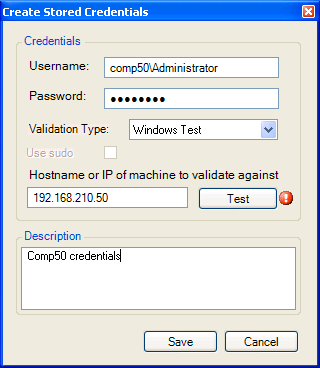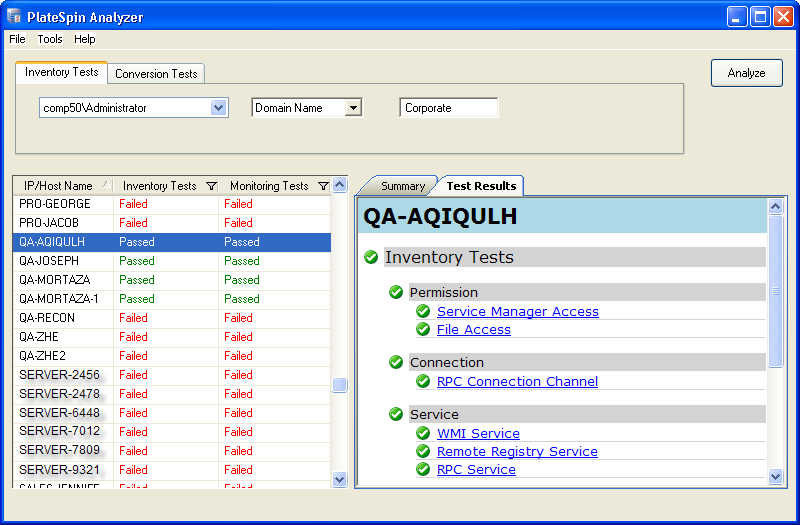4.6 PlateSpin Analyzer
The PlateSpin Analyzer quickly analyzes networks and determines whether PlateSpin Recon can successfully inventory, monitor, or convert the specified Windows servers. It performs two different types of tests: Inventory and Conversion.
4.6.1 Using PlateSpin Analyzer
-
Click .
The PlateSpin Analyzer window is displayed.
-
Click the drop-down list and select .
The Create Stored Credentials dialog box is displayed.
Figure 4-5 Create Stored Credentials dialog box

-
Type a and in the form domain\username or hostname\username.
-
Click the drop-down box and select either Windows Test or Unix Test.
PlateSpin Analyzer does not support analysis of Unix/Linux servers, but they can be used for credential validation.
-
(Optional) Type a description for the credentials.
-
Click .
NOTE:If is grayed out, verify that the credentials are entered in the correct format.
-
Click the drop-down list and select one of the available options: , , .
-
Type a value in the empty field appropriate for the selection in Step 5. For example, if you selected , enter your domain name.
-
Click and wait for the process to complete.
Figure 4-6 PlateSpin Analyze analysis display

When the analysis is complete, the left pane displays either Passed or Failed. Click the tab in the right pane to view result details. If any of the tests returned a failed result, the cause must be resolved before PlateSpin Recon can successfully inventory the host. A failed result typically indicates that there are insufficient permissions and/or that the required services are not running.
4.6.2 Inventory and Monitoring Tests
Inventory tests are divided into 3 main groups, each containing a subset of tests:
Table 4-3 Inventory Test groups
Monitoring tests are divided into 2 main groups, each containing a subset of tests:
Table 4-4 Monitoring test groups
4.6.3 Conversion Tests
Conversion Tests are similar to those performed by the PlateSpin Portability Suite PlateSpin Analyzer tool. For more information, refer to Knowledge Base article Q20478.